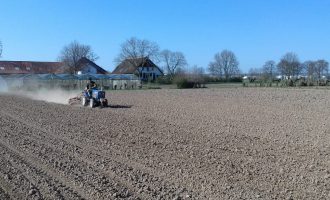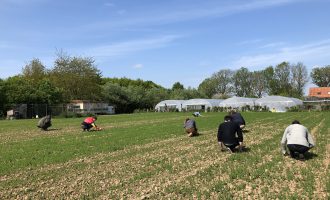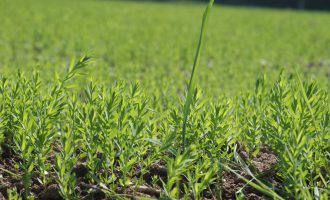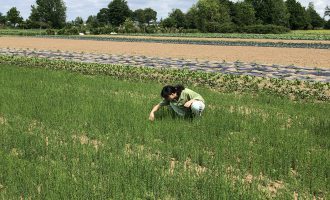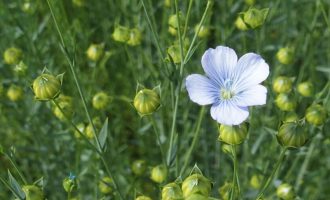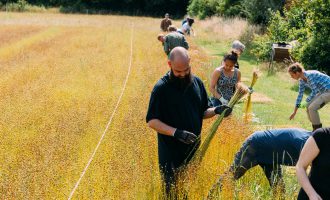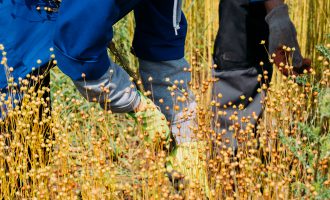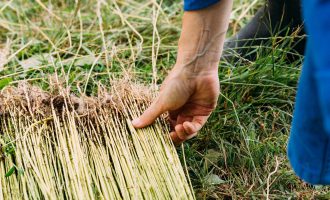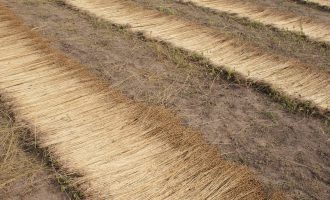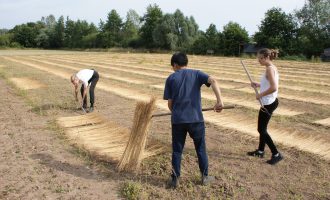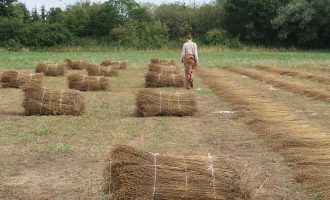Organic Flax Cultivation, de Horsterhof, Duiven
The 0.2-hectare flax field sown at organic farm de Horsterhof in 2019 presented an opportunity to explore a community-oriented approach to agriculture. Volunteers, friends and family joined the Linen Project in tending and harvesting the flax by hand. Working under the guidance of cultivation supervisor Karlijn Bokhorst and in close cooperation with farmer Christoffel de Bruine, our ‘cultivation crew’ involved around 40 individuals throughout the season. Gathering lunch from the field while caring for the flax further brought the connection with fibre and food to life – the team at de Horsterhof generously shared in the experiment and the experience.
Organic farming practices at de Horsterhof focus on supporting and stimulating ecosystems by working together with nature. Their crop rotation encourages soil health and crop resilience through biodiversity – cultivated varieties are grown on the same plot once every eight years. Flax proved a natural fit. In addition to its fibre potential, the flax plants’ deep-reaching roots aerate the soil, and as a resting crop, it contributes to nutrient restoration.
-
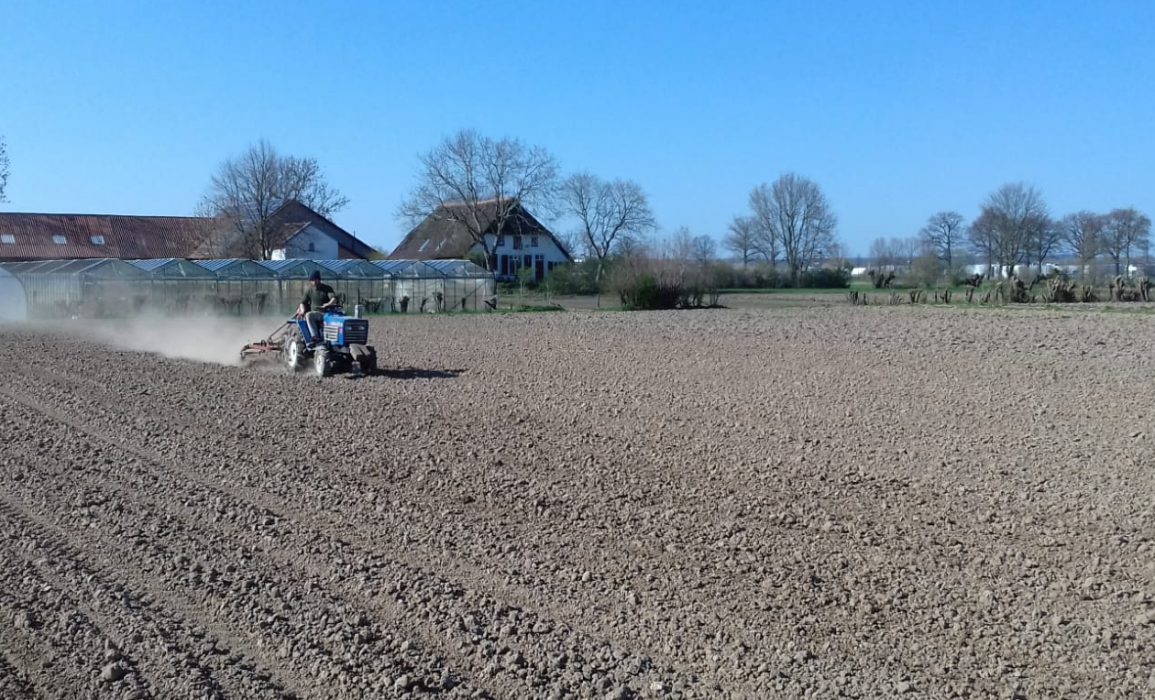
Sowing
The flax at de Horsterhof was sown using a spreader, casting the seeds broadly over the field. The hand-operated version is referred to as a seed-broadcaster or seed-fiddle. Here the ground is being cultivated to work the flax seeds into the soil after sowing.
-
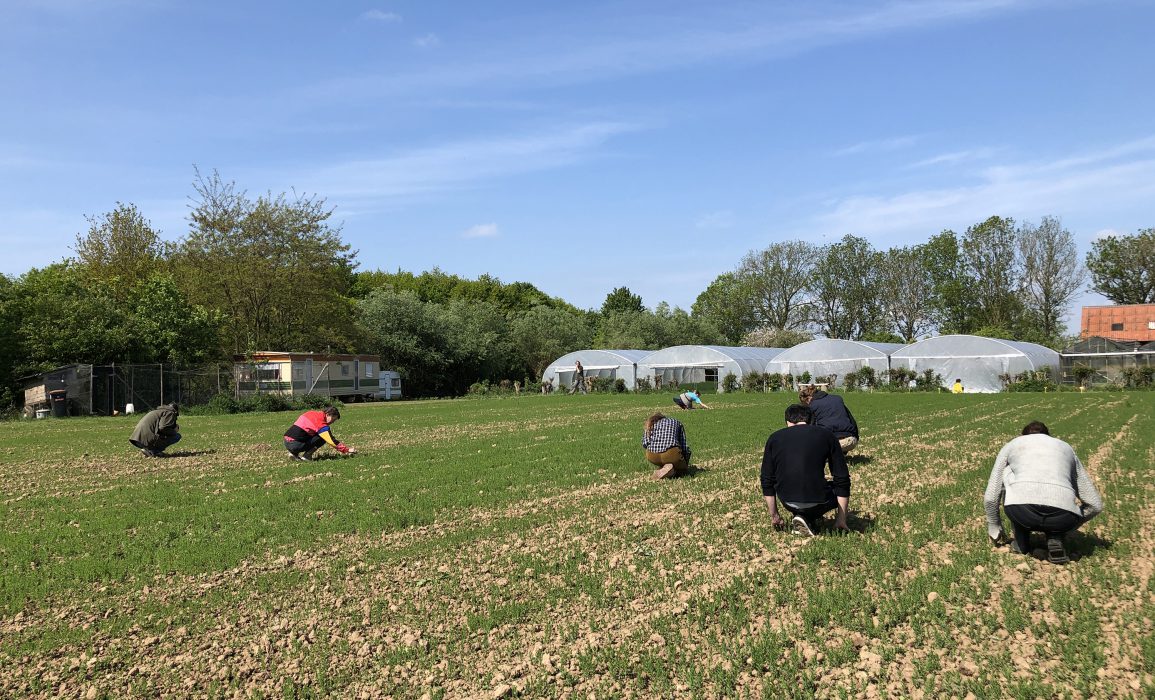
Weeding by hand – day 39 after sowing
Weeding by hand is part of organic and biodynamic farming practices, promoting biodiversity. Removing the competition gives young flax plants the growing advantage. Our volunteers enjoyed near-perfect weather as they moved steadily across the field, covering all ground on hands and knees and leaving the weeds where they fall to return to the soil. The odd lettuce, seeding from last year's crop, contributed to a delicious lunch.
-
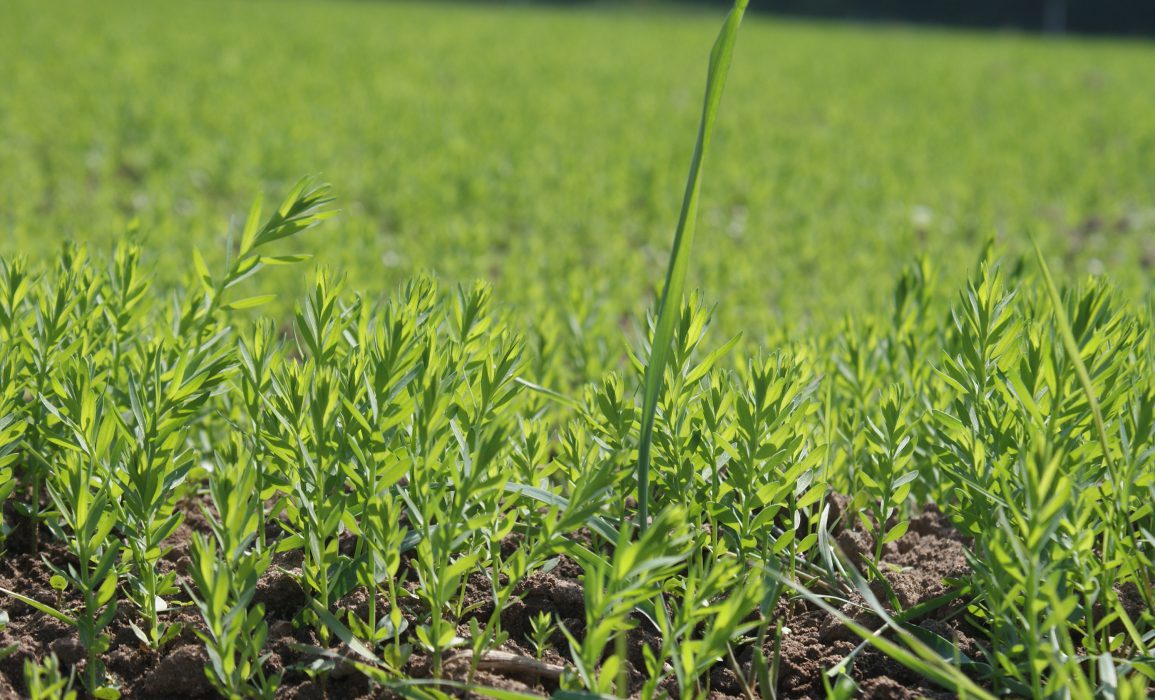
Flax seedlings – day 39 after sowing
The field at de Horsterhof was the first to be sown in The Linen Project's 2019 season. Late frosts resulted in the moment of germination, around day 16, being comparable to the locations that were sown later. Flax farmers generally speak of a 100-day growing period from the moment the seeds are sown to the harvest. We are curious to see this in practice.
-
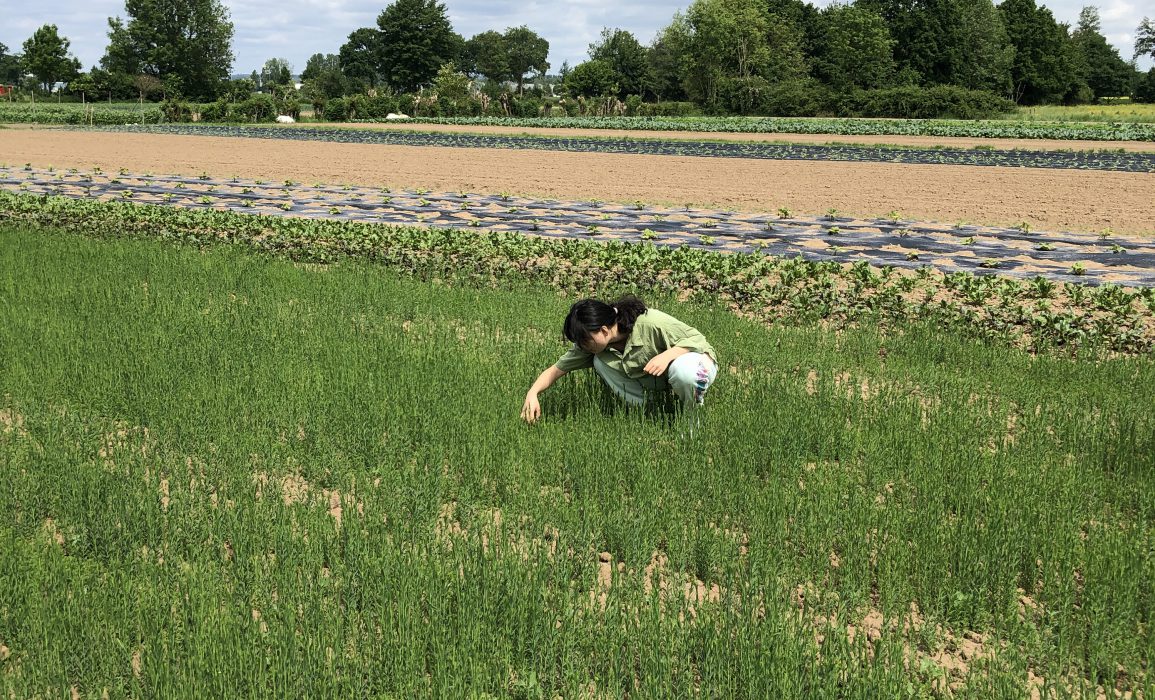
Weeding by hand – day 51 after sowing
A growth spurt has taken place since the last weeding session. At this stage, the flax fibres are developing and care is needed when entering the field to pick the remaining weeds and get the field 'clean'. Barefoot or on socks is the traditionally recommended approach to minimise impact. Since the flax was sown with a spreader there are no rows to walk down, adding to the dance.
-
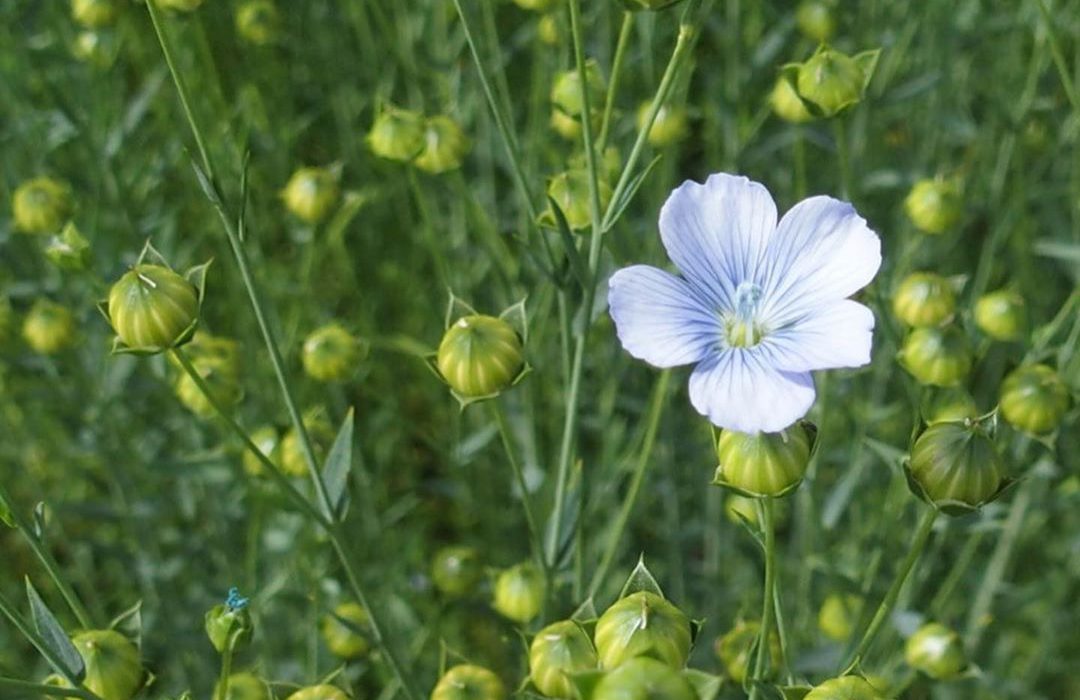
Flax in bloom – day 79 after sowing
Our first flowers of the season were glimpsed at de Horsterhof on day 64. The last flowers there bloomed just over two weeks later, on day 79. Seed pods can clearly be seen forming and the flax is getting closer to day 100, and our first harvest of the season.
-
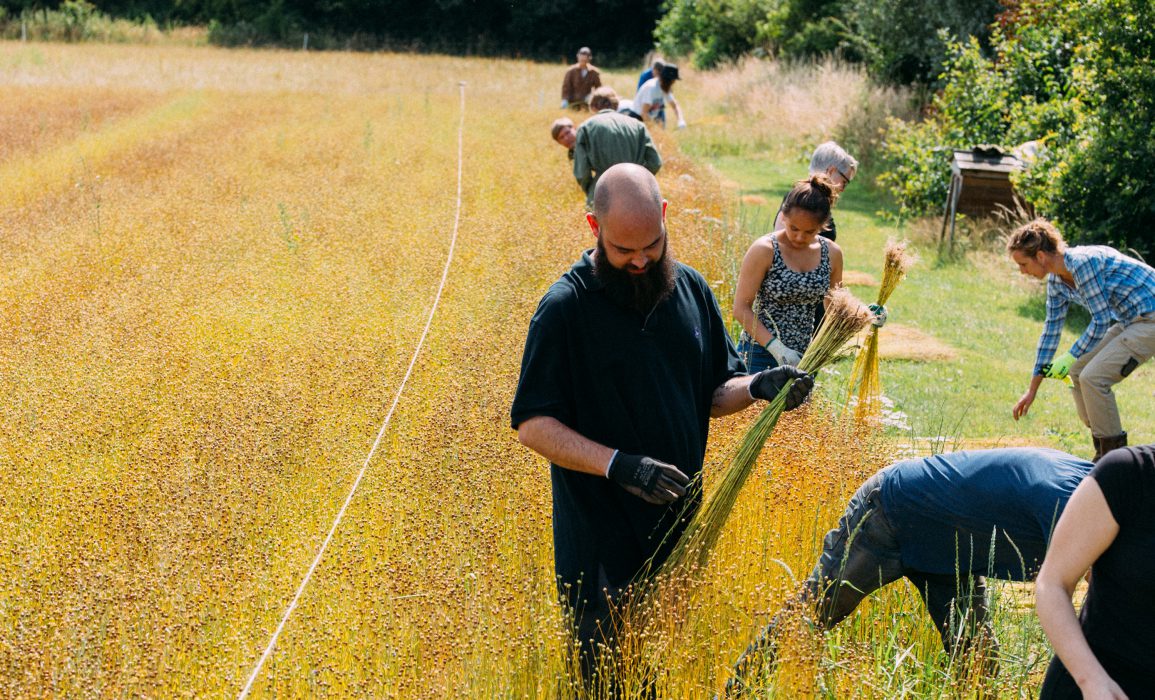
Pulling the flax
The first harvest of our season began early on a Saturday morning, 13 July 2019, with around 30 volunteers from the wider Linen Project community. The flax crop at de Horsterhof proved more bountiful than expected. After a lunch straight from the land, those who were available continued into the summer evening and joined when possible throughout the week, until all of the flax was laid on the field – the mild weather luckily in our favour.
-
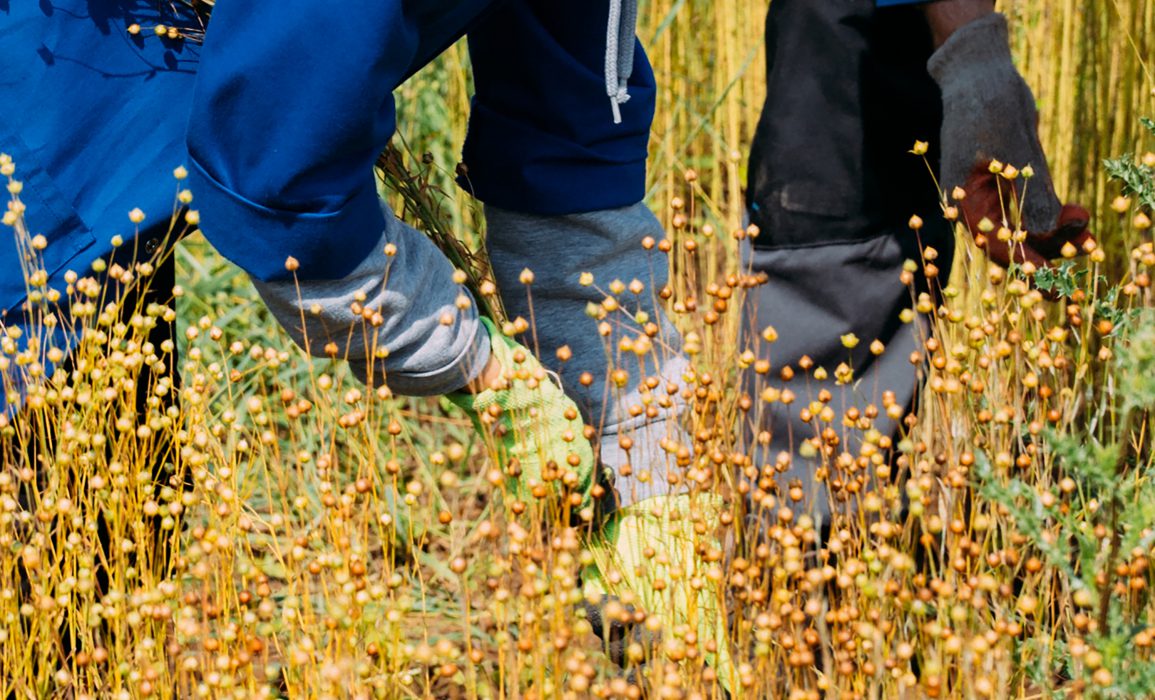
Haptic knowledge
Harvesting the flax by hand means truly getting in touch with the fibre source, a new experience for many of our volunteers. Activating the body and gaining insight, while directly contributing to the production process and conditions. Working together on the field also provided fertile ground for conversation, connection and knowledge exchange.
-
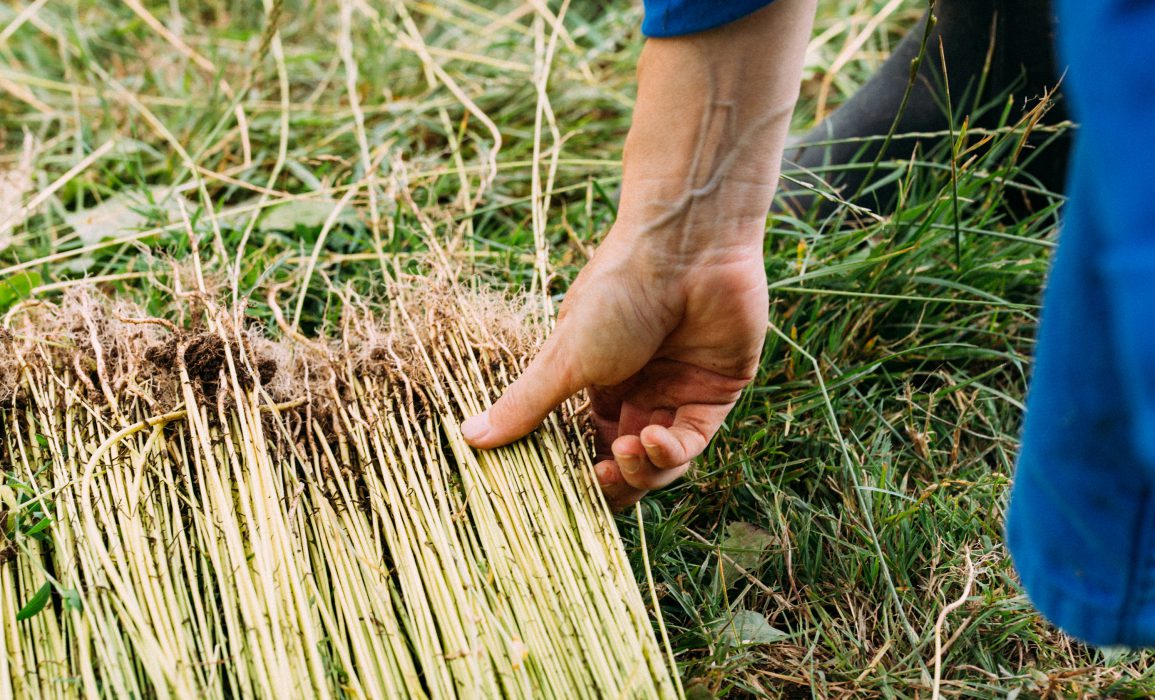
Laying out the spread
In this first stage of the harvest process, the flax plants are pulled from the soil, roots and all, and kept as straight as possible to avoid damaging the long fine fibres within. They are laid out in even rows, also referred to as the ‘spread’, in preparation for the processes that follow.
-
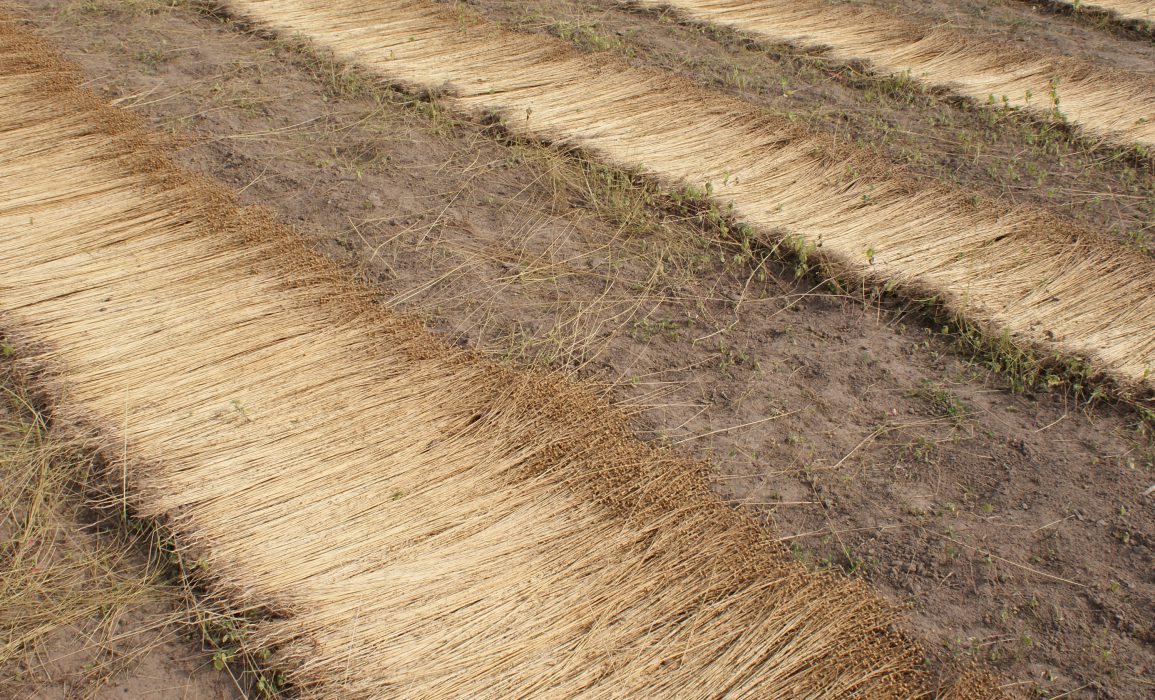
Retting flax
Left out on the field, the flax is exposed to naturally occurring heat and moisture that is necessary for the dew retting process; breaking down the pectin connecting the desired fibres with the woody parts of the stem. The weather and the balance between the elements determine the progression. Careful monitoring is required to detect when the retting process is complete.
-
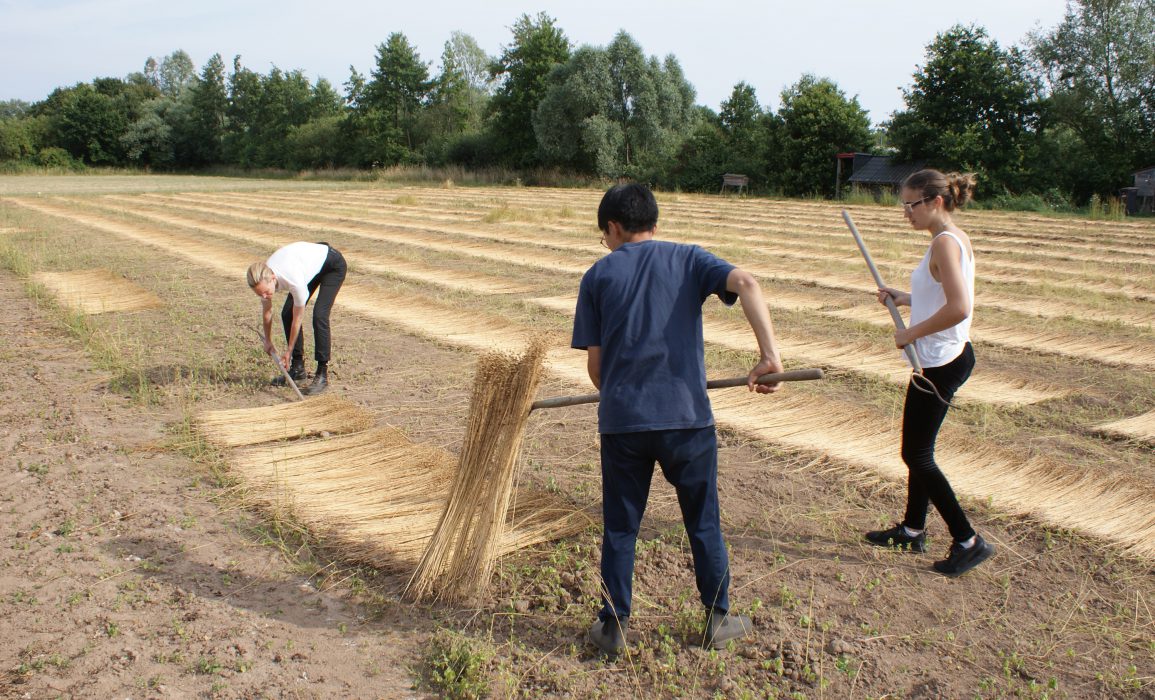
Turning the flax
The flax ‘spread’ is turned to generate an even exposure to the elements and promote a consistent fibre result from the retting process. This generally takes place around two weeks after the harvest. Lining up the roots of the flax rows during the first stage of the harvest allows for the ‘spread’ to easily be flipped over from one side to the other.
-
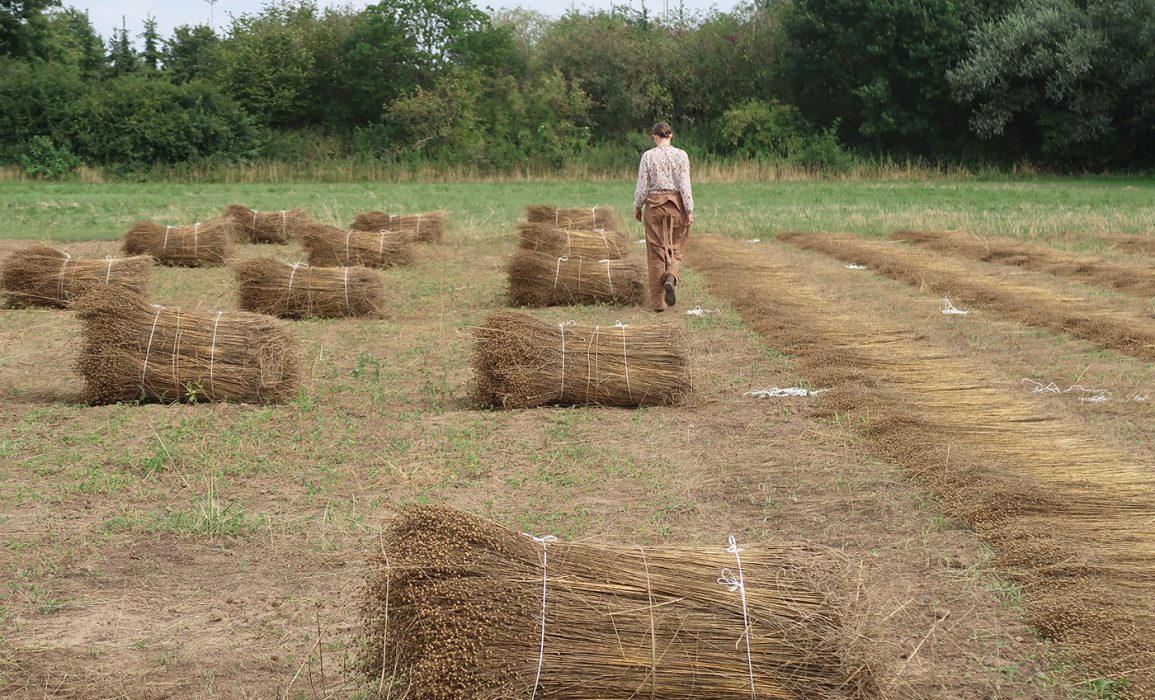
Bringing in the flax harvest
Once the flax is sufficiently retted the harvest is brought in: timing is key. Judging the fibre quality requires years of haptic knowledge – we were grateful for the guidance of more experienced flax growers in this step. Dry conditions are necessary to prevent the harvested fibre from rotting during storage, and luckily the weather cooperated. Available volunteers rolled the flax harvested at de Horsterhof into make-shift bales mimicking the bales conventionally rolled using a baling machine, in preparation for processing.
